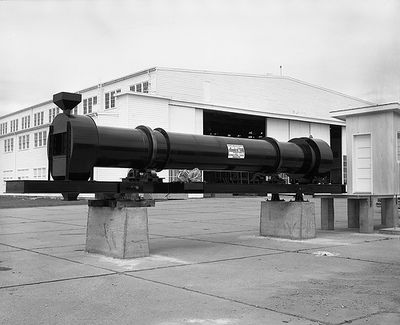Direct Reduced Iron
(Redirected from Direct Reduction)
Jump to navigation
Jump to search
Basics
- Often abbreviated as DRI
- Direct-reduced iron is a metallic material formed by the reduction (removal of oxygen) of iron oxide (iron ore) at temperatures below the melting point of iron. DRI is produced by the use of a reducing gas (mostly a mixture of hydrogen and carbon monoxide). The temperatures for this process are significantly lower than those in a blast furnace, and capital requirements are also lower. DRI may have a sponge-like structure, leading to the alternative name "sponge iron".
- Suitable starting materials are very high-grade iron ores (70% iron content and up) or rusted scrap steel, which is mostly iron. These could not yet be used in an induction furnace, as the reduction is a chemical reaction while induction only melts the already-reduced pure metal. India is one of the global leaders in sponge iron production, having numerous small or medium-sized facilities. DRI is commonly manufactured in a rotary kiln.
Forms of Material Produced
- Direct Reduced Iron, or Sponge Iron ( May want to make a page for this product, and move this page's content to "Direct Reduction (Mettalurgy)" ? )
- HDRI ("hot direct reduced iron"): when the still-hot iron is immediately moved for melting into an electric arc furnace or induction furnace, to save energy. Caution: when HDRI is exposed to air, it may rapidly oxidize (=explode!). OSE Will Use This for On-Site Usage
- Hot-briquetted iron (HBI) is a form of DRI designed for ease of shipping, handling and storage. It is made via briquetting the iron while it is still hot, then letting it cool
- Mainly used for trade (See Iron Shortage ) due to it's stability
- Does a Pelletized version exist/make sense?
- OSE Will Use This For Trade and Long Term Storage
Product ecology
In's
- Energy, which will be vary depending on if onsite fuel is used, or if electric heating, and offsite reducing gas are used
- Iron Ore (deleted bit had some numbers on concentrations grab that + more sources later)
- Iron Scrap and Steel Scrap
- Reducing Gas (Either Syngas from an onsite source, or Hydrogen from remote sources)
Out's
- Waste heat -- The DRI process generates waste heat that can potentially be used for pyrolyzing further biomass (pyrolysis = heating in absence of oxygen). Pyrolysis releases yet more syngas which can be fed back into the process. Everything is thus powered by biomass, generating biochar. In cold climates, any kind of waste heat can obviously be useful for heating winter greenhouses.
Further information is needed !
- Is this actually feasible on the small scale?
- Sure - thousands of these in India
- Does the process take place at normal atmospheric pressure?
- Yes, it can
- Can a rotary kiln be designed for the village scale?
- Yes, but this process does not have to take place in rotary kiln; the only thing that matters is good mixing.
- Are sufficient amounts of high-grade ores or rusted steel available?
- It doesn't matter. If we get the metal extraction from clays working, then we can concentrate most clays into high-grade ores.
- Scalability is feasible, but efficiency may not be as good. The processes of the largest plants can also be done on a table top. The question is - at what point does it still make sense to do so? If we have access to abundant energy, feasibility may occur at a village scale (added: concentrated solar power can serve as heat source; needs methane atmosphere). (Perhaps the Charcoal Blast Furnace could handle low end, and dri, the high end?)
This appears to be a good alternative for smaller scale, lower-cost process, worth adding to our general awareness.
Other Metals
- paper: Carbothermal reduction of alumina: Thermochemical equilibrium calculations and experimental investigation
- paper: Mechanism of carbothermal reduction of iron, cobalt, nickel and copper oxides
Internal Links
- Open Source Direct Reduced Iron Reactor
- Open Source Metal Recycling + Refining Construction Set
- Magnetite - incl. extraction of high-grade iron ore from beach sand
- Metal
- Metal Refining
- Steel from dirt
- Kiln
- Charcoal Blast Furnace
External links
- Wikipedia: Direct reduced iron
- Wikipedia: Sponge iron reaction
- Wikipedia: Water gas shift -> a way to increase the hydrogen content in syngas
- WW2-era (1942) TIME Magazine article on sponge iron
- A Company Attempting to Commercialize This
